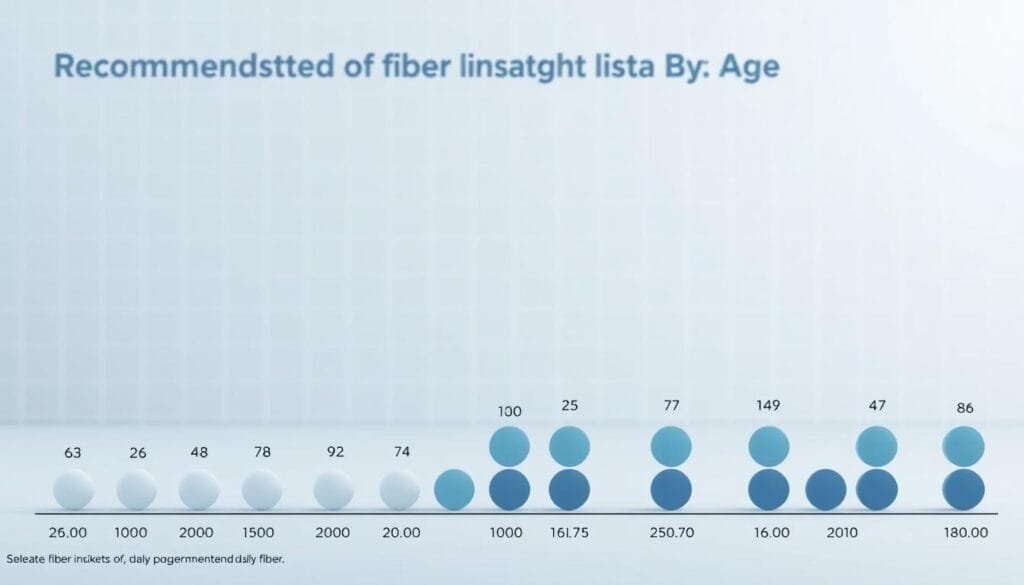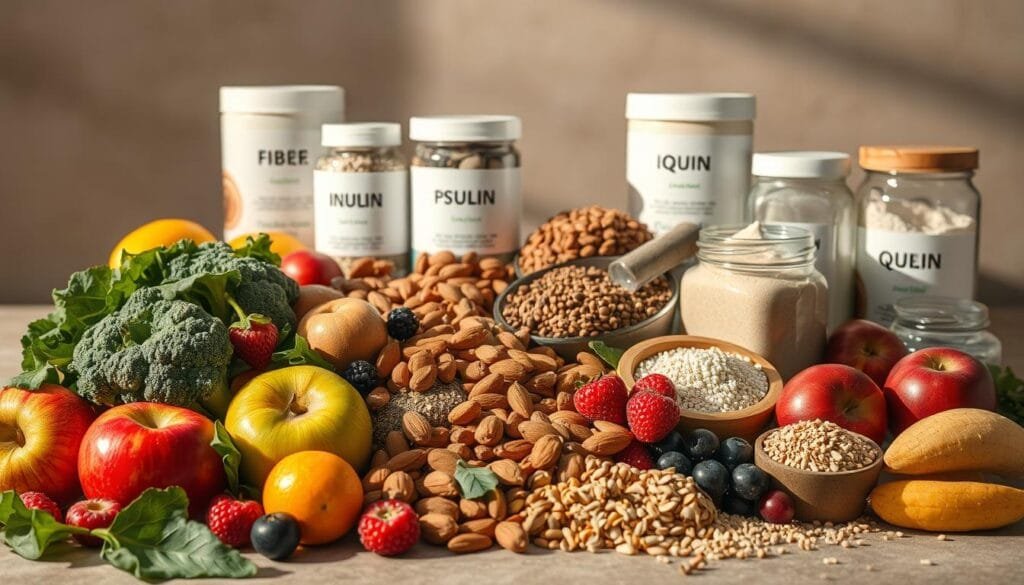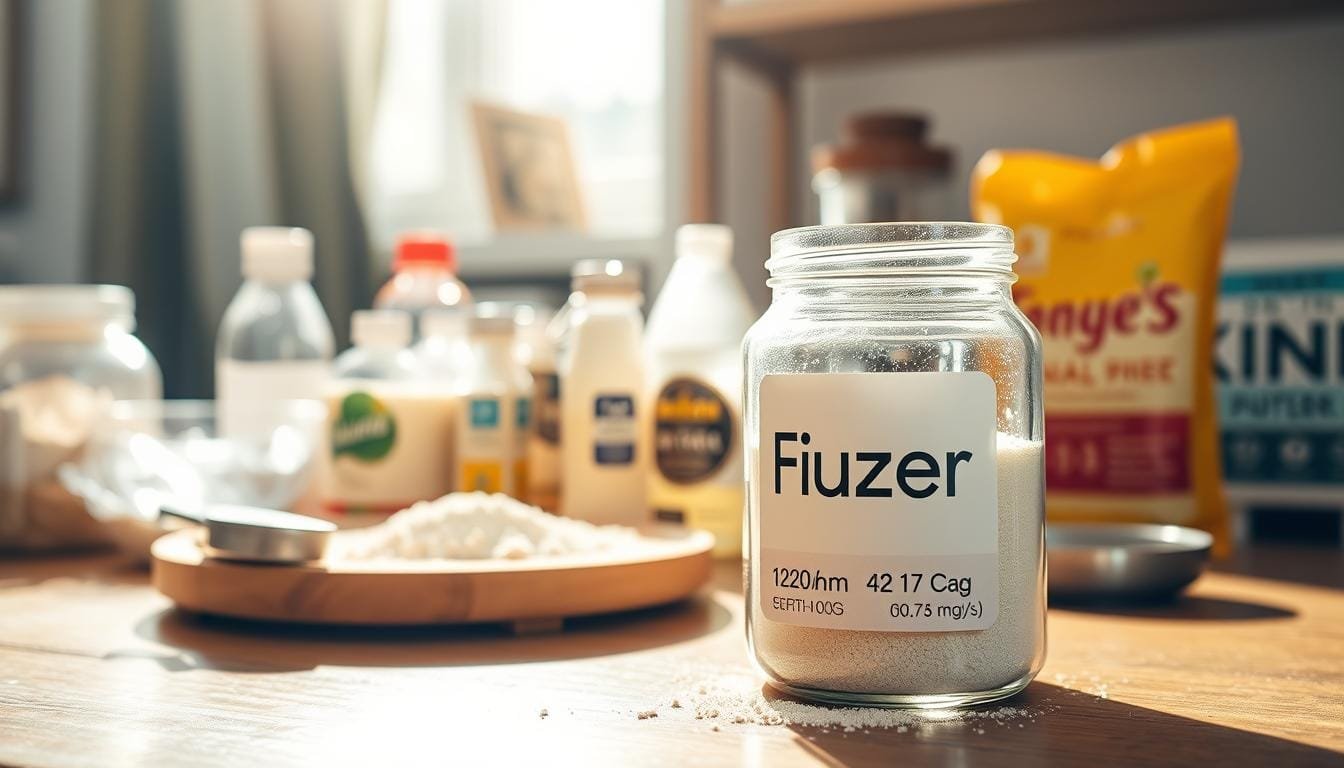Currently Empty: RM0.00
Did you know most people fall short of their recommended fiber needs? The average American consumes only 16 grams daily, while experts suggest 25–34 grams for optimal health. This gap can impact digestion, heart health, and even blood sugar levels.
Fiber plays a crucial role in wellness, yet many struggle to meet daily targets through food alone. Supplements like powders offer a convenient solution, but questions remain about proper usage. How do they compare to natural sources? What’s the right balance?
Wellness Concept specializes in digestive health, guiding individuals toward sustainable habits. Their expertise aligns with FDA and USDA guidelines, ensuring safe and effective recommendations. Small adjustments can make a big difference—no drastic diet changes needed.
For personalized advice, contact Wellness Concept at +60123822655 during business hours. Let’s explore how to bridge the fiber gap wisely.
Key Takeaways
- Most people consume less fiber than recommended—only 16 grams per day.
- Adequate intake (25–34 grams) supports digestion and reduces disease risks.
- Powders can help but should complement, not replace, whole foods.
- Expert guidance ensures safe and effective supplementation.
- Small dietary tweaks can significantly improve fiber intake.
What Is Fiber and Why Does It Matter?
Behind every healthy digestive system lies an often-overlooked hero: dietary fiber. This indigestible plant material acts like nature’s broom, sweeping through the body to support everything from bowel regularity to heart health.
Understanding Dietary Fiber
Found in fruits, vegetables, and whole grains, fiber resists digestion but fuels crucial processes. Unlike other nutrients, it passes through the gut intact, adding bulk to stool and feeding beneficial gut bacteria. A cup of raspberries, for example, delivers 8 grams—nearly a third of daily needs.
Soluble vs. Insoluble Fiber
Soluble fiber (oats, beans) dissolves in water, forming a gel that slows digestion and helps manage cholesterol. Insoluble fiber (whole grains, celery) stays rigid, speeding up food transit to prevent constipation. Both types work together for optimal function.
Role of Fiber in Digestive Health
Beyond regularity, *fermentable fiber* nourishes the gut microbiome. Chia seeds, rich in this type, promote immune support and blood sugar control. Studies also link high-fiber diets to weight management—proof that small dietary tweaks yield big rewards.
“Fiber isn’t just about digestion; it’s a cornerstone of holistic wellness.”
How Much Fiber Powder Per Day? Recommended Intake

Optimal fiber consumption varies significantly across different life stages and lifestyles. While supplements can help bridge nutritional gaps, understanding baseline requirements ensures safe and effective use.
Daily Fiber Guidelines by Age and Gender
The USDA provides clear benchmarks based on biological needs. Men under 50 require 31-34 grams fiber per day, while women in the same age group need 25-28 grams. This difference reflects men’s typically higher caloric intake and muscle mass.
Seniors see slight reductions—28 grams for men and 22 grams for women over 50. These adjustments account for metabolic changes while maintaining digestive support.
Fiber Needs for Adults vs. Children
Pediatric requirements grow with the child. A 4-year-old needs about 14 grams daily—equivalent to two apples with skin. Teens approach adult levels, with 14-31 grams recommended depending on age and sex.
In Malaysia, where rice dominates meals, incorporating whole grains like brown rice boosts intake naturally. One bowl provides 3.5 grams—a smart start for meeting children’s needs.
Adjusting for Dietary Goals
Those targeting weight loss may benefit from higher soluble fiber intake. Forms like psyllium husk expand in the stomach, promoting satiety. Start with 5-gram increments weekly to minimize bloating.
For gut health, diversity matters. Rotate between oat bran (6g/serving) and flaxseed (3g/tbsp) to nourish different probiotic strains. Malaysian favorites like ulam herbs add both flavor and prebiotics.
“Gradual increases paired with hydration help the digestive system adapt comfortably to higher fiber intake.”
Health Benefits of Meeting Your Daily Fiber Needs
Meeting daily fiber targets unlocks surprising benefits beyond digestion. Research links adequate intake to lower disease risks and enhanced vitality. Here’s how hitting 25–34 grams daily transforms wellness.
Supports Heart Health and Blood Sugar Levels
Soluble fiber, like oat beta-glucans, binds to cholesterol in the gut. This reduces LDL levels by up to 10%, cutting cardiovascular disease risk by 15–30% (FDA). A bowl of oatmeal delivers 4 grams of these heart-protective compounds.
Fiber also slows glucose absorption, stabilizing blood sugar levels. Studies show diets rich in lentils (15.6g/cup) lower type 2 diabetes risk by 18%.
Aids Digestion and Prevents Constipation
Insoluble fiber adds bulk to stool, speeding up transit time. Compare bowel movements:
| Low-Fiber Diet | Optimal Fiber Intake |
|---|---|
| Hard, infrequent stools | Soft, regular movements |
| Bloating | Improved comfort |
| Higher colorectal cancer risk | 28g/day reduces stroke risk by 7% |
Overdoing it? Increase intake gradually to avoid gas or bloating.
Boosts Gut Bacteria and Immune Function
Fermentable fibers, like those in Jerusalem artichokes, feed beneficial gut bacteria. This strengthens immune function—70% of immune cells reside in the gut. A diverse microbiome also fights inflammation.
“Fiber’s prebiotic effects make it a cornerstone of long-term wellness.”
Pair fiber-rich foods with water for maximum benefits. Small tweaks, like swapping white rice for brown, make achieving targets effortless.
Top Sources of Fiber: Food vs. Supplements
Navigating fiber sources can be tricky—should you prioritize whole foods or supplements? Both offer unique advantages, but understanding their roles helps create a balanced approach. Here’s how to make informed choices for your lifestyle.

High-Fiber Whole Foods to Prioritize
Fruits and vegetables dominate the fiber charts. Local Malaysian favorites like guava (5.4g/fruit) and petai (stink beans, 4.3g/serving) pack a punch. Pair them with whole grains like brown rice (3.5g/bowl) for a digestive boost.
Top 5 Malaysian fiber-rich foods:
- Ulam raja (wild leaves): 6g per 100g
- Jackfruit: 3g per cup
- Oats: 4g per ½ cup (dry)
- Almonds: 3.6g per ounce
- Split peas: 16.4g per cup (cooked)
When Supplements Make Sense
Fiber supplements shine in specific situations. Psyllium husk powders (3g/serving) help travelers maintain regularity. They’re also useful for those with dietary restrictions or sudden intake gaps.
Local vs. imported supplement comparison:
| Type | Cost (MYR) | Fiber per Serving |
|---|---|---|
| Local psyllium | 15–20 | 3g |
| Imported brand | 35–50 | 3–5g |
“Supplements fill gaps but shouldn’t replace whole foods—diversity matters for gut health.”
Natural vs. Supplemental Fiber: Key Differences
Whole foods provide synergistic nutrients like vitamins and antioxidants. A serving of nasi ulam (herb rice) delivers fiber alongside iron and folate. Supplements, while convenient, lack these extras.
Psyllium husk requires ample water to prevent blockages. For best results, mix 1 tablespoon with 250ml water. Overuse may cause bloating—stick to 1–2 servings daily unless advised otherwise.
Try this fiber-packed nasi ulam recipe:
- Mix brown rice with shredded herbs (pegaga, kesum)
- Add toasted coconut and sliced cucumber
- Drizzle with lime juice (boosts nutrient absorption)
Practical Tips to Increase Your Fiber Intake
Smart eating habits can transform fiber intake without overwhelming your routine. With a few swaps and mindful adjustments, reaching daily targets becomes effortless. Here’s how to seamlessly incorporate more fiber into meals while avoiding discomfort.
Simple Swaps for a Fiber-Rich Diet
Replace white rice with brown rice for an extra 2 grams per serving. Add chia seeds to smoothies or teh tarik—just 1 ounce packs 8.4 grams. Local favorites like roasted chickpeas make crunchy, portable snacks (5g fiber/100g).
Try this 7-day Malaysian-inspired plan:
- Monday: Nasi ulam with brown rice + cucumber slices
- Wednesday: Overnight oats with mango and flaxseeds
- Friday: Stir-fried petai with whole wheat noodles
How to Gradually Add Fiber to Avoid Discomfort
Start with a 5-gram increase weekly. For example, mix 1 teaspoon of psyllium husk into breakfast porridge. Too much too soon causes bloating—patience is key.
Common mistakes to skip:
- Doubling intake overnight
- Ignoring hydration needs
- Relying only on supplements
Hydration and Fiber: Why Water Matters
Fiber absorbs water to work effectively. Drink 8 ounces per 5 grams of fiber—about one glass per teaspoon of powder. Dehydration worsens constipation, especially with supplements.
“Pair fiber with fluids for smooth digestion. Herbal teas like serai (lemongrass) count too.”
Track intake with this simple guide:
| Fiber Added | Water Needed |
|---|---|
| 1 tsp psyllium | 1 glass (250ml) |
| ½ cup oats | 2 glasses |
Conclusion
Reaching the ideal 25–34 grams of fiber daily supports digestion and overall health. Whole foods like fruits, vegetables, and whole grains should form the foundation of intake. Supplements can help fill gaps when needed.
Wellness Concept offers personalized guidance to make this easy. Their team is available during extended hours, including weekends. For tailored advice, text questions via WhatsApp at +60123822655.
Small, steady changes work best. Start by adding one fiber-rich food each day. Hydration is key—drink water with meals and supplements. Progress takes time, but the benefits last a lifetime.
Ready to optimize your intake? Contact Wellness Concept today. Their experts can create a plan that fits your lifestyle and goals.
FAQ
What’s the difference between soluble and insoluble fiber?
Soluble fiber dissolves in water, forming a gel that helps regulate blood sugar and cholesterol. Insoluble fiber adds bulk to stool, promoting healthy digestion and preventing constipation.
How much fiber should adults consume daily?
Women need about 25 grams, while men should aim for 38 grams. These amounts support heart health, digestion, and stable blood sugar levels.
Can fiber powder replace high-fiber foods?
Supplements can help meet needs but shouldn’t replace whole grains, fruits, and vegetables. Natural sources provide vitamins and minerals that powders lack.
What happens if I consume too much fiber?
Excess intake may cause bloating or gas. Gradually increase servings and drink plenty of water to ease digestion.
Are there fiber-rich foods suitable for kids?
Yes! Apples, oats, and carrots are great options. Start with small portions to avoid stomach discomfort.
Does fiber aid weight loss?
Yes. It promotes fullness, reducing overeating. Pair it with protein and healthy fats for balanced meals.
Should I take fiber supplements for constipation?
Powders like psyllium husk can help, but prioritize whole foods first. Always consult a doctor for chronic issues.



